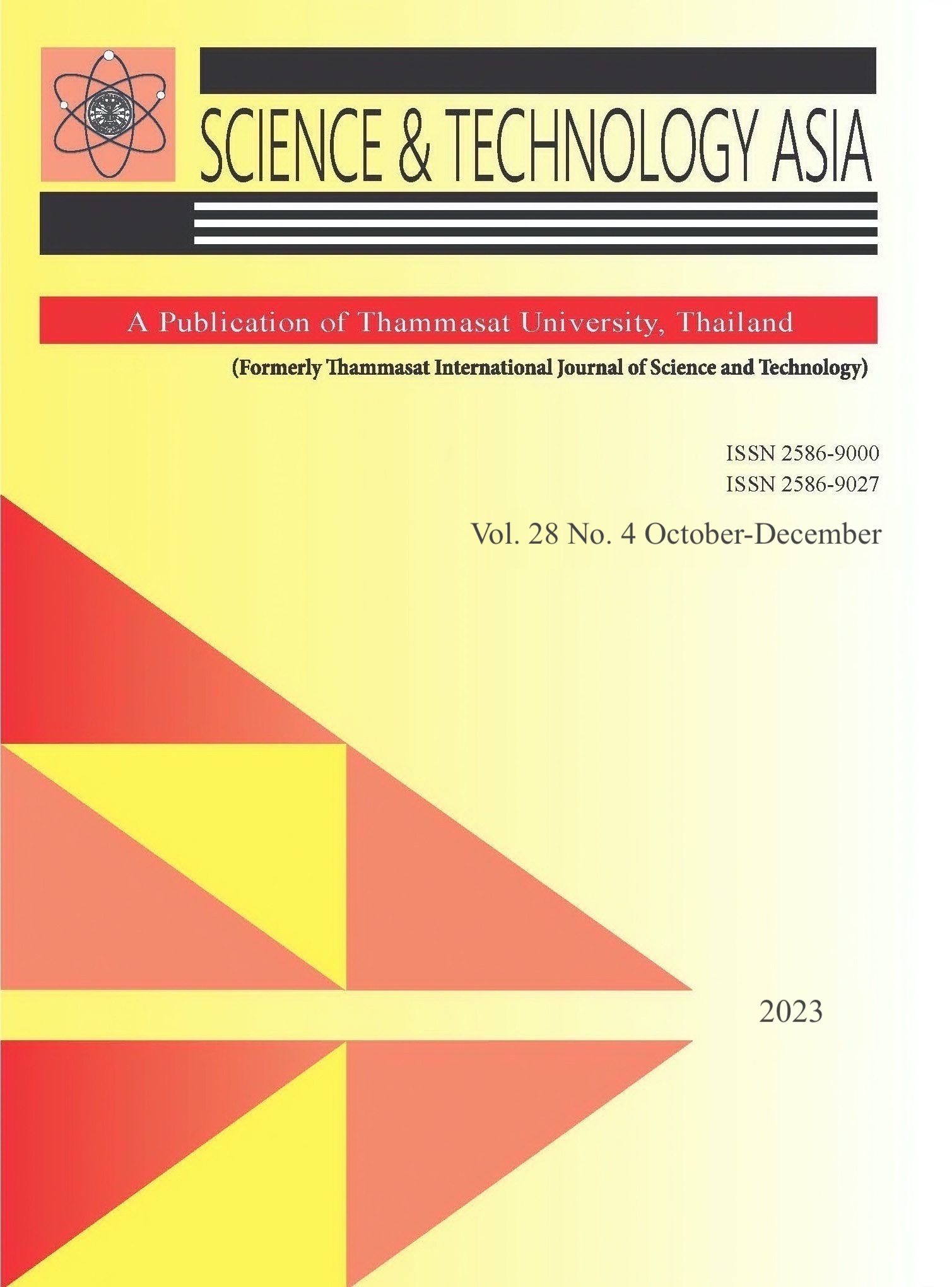Compressive Strength and Setting Times of Slump Recovery Concrete with Fly Ash
Main Article Content
Abstract
Slump loss is a major problem of fresh concrete during construction, especially in hot climates. In this study, to retemper the concrete with loss of slump, a 2nd dose of superplasticizer is added to the concrete. With the addition of the 2nd dose of superplasticizer, the problem of slump loss can be solved; however, other concrete properties can be affected. This paper investigated the times of setting and compressive strength of the slump recovery concrete by a type F naphthalene-based superplasticizer. The concrete mixtures tested in this paper were concrete containing fly ash in the range of 0%, 30%, and 50% of the total binder. The paste volume ratios of the tested concrete were 1.2 and 1.3, whereas the water to binder ratios were varied from 0.30 to 0.58, and the initial superplasticizer dosages (SP) were applied between 0.5 to 1.6%. The setting times were tested on the mixtures at the times before and after the redosing by varying the 2nd SP dosage and time for the dosing. The results indicated that both the times of the initial and final sets were delayed by the addition of the 2nd SP dose and delayed more with the increase of the 2nd dosage. The delay was more severe in fly ash concrete when compared to cement-only concrete and the larger the fly ash replacement percentage, the longer the setting times were. The setting times were prolonged to a maximum of about 4 hrs. in the case of 50% fly ash concrete with 2nd SP dosage of 1%, whereas they were 2 hrs. in the case of 30% fly ash concrete with the same 2nd SP dosage. It was found that the incorporation of fly ash yields insignificant differences between the compressive strength of fly concrete with and without SP redosing. On the other hand, the SP redosing caused slightly lower compressive strength of cement-only concrete.
Article Details

This work is licensed under a Creative Commons Attribution-NonCommercial-NoDerivatives 4.0 International License.
References
Mohan M, John E. Study on slump retention of ready-mix concrete: a review. Int Res J Eng Technol, 2020;7(7).
Amnuaylojaroen T, Limsakul A, Kirtsaeng S, Parasin N, Surapipith V. Effect of the near-future climate change under RCP8.5 on the heat stress and associated work performance in Thailand. Atmosphere, 2022;13(2):325.
Phanprasit W, Rittaprom K, Dokkem S, Meeyai AC, Boonyayothin B, Jaakkola JJK, Näyhä S. Climate warming and occupational heat and hot environment standards in Thailand, Saf Health Work, 2021;12(1):119-26.
Sobhani J, Najimi M, Pourkhorshidi AR. Effects of retempering methods on the compressive strength and water permeability of concrete. Sci Iran Trans A: Civ Eng, 2012;19:211-7.
Erdoğdu S. Effect of retempering with superplasticizer admixtures on slump loss and compressive strength of concrete subjected to prolonged mixing. Cem Concr, 2005;35(5):907-12.
Bayer IR. Influence of retempering with superplasticizer on fresh and hardened properties of prolonged mixed concretes containing supplementary cementitious materials. Teh. Vjesn, 2023;30(4):1118-25.
Hanayneh B. Effect of retempering on the engineering properties of superplasticized concrete. Mater Struct, 1989;22:212-9.
Alhozaimy AM. Effect of retempering on the compressive strength of ready-mixed concrete in hot-dry environments. Cem Concr Compos, 2007;29:124-7.
American Society for Testing and Materials. ASTM C150. Standard specification for Portland cement. West Conshohocken. PA. ASTM International. 2012.
Thai Industrial Standard. TIS 15. Standard specification for Portland cement. Bangkok. Thailand. Thai Industrial Standard. 2004.
Thai Industrial Standard. TIS 2135. Coal fly ash for use as an admixture in concrete. Bangkok. Thailand. Thai Industrial Standard. 2002.
American Society for Testing and Materials. ASTM C618. Coal fly ash and raw or calcined natural pozzolan for use in concrete. West Conshohocken. PA. ASTM International. 2012.
American Society for Testing and Materials. ASTM C33. Standard specification for concrete aggregates. West Conshohocken. PA. ASTM International. 2018.
American Society for Testing and Materials. ASTM C494. Standard specification for chemical admixtures for concrete. West Conshohocken. PA. ASTM International. 2017.
American Society for Testing and Materials. ASTM C29. Standard test method for bulk density and voids in aggregate. West Conshohocken. PA. ASTM International. 1997.
Collepardi, M. Admixtures used to enhance placing characteristics of concrete. Cem Concr Compos, 1998;20(2):103-12.
Wanichlamlert C, Tangtermsirikul S. 2nd dose of superplasticizer and slump recovery of concrete using naphthalene based superplasticizer. In 10th International Symposium on New Technology for Urban Safety of Mega Cities in Asia 2011. Chiang Mai, Thailand.
American Society for Testing and Materials. ASTM C39. Standard test method for compressive strength of cylindrical concrete specimens. West Conshohocken. PA. ASTM International. 2021.
American Society for Testing and Materials. ASTM C403. Standard test method for time of setting of concrete mixtures by penetration resistance. West Conshohocken. PA. ASTM International. 2008.
Ping Gu, Ping Xie, Beaudoin J.J, Jolicoeur C. Investigation of the retarding effect of superplasticizer on cement hydration by impedance spectroscopy and other methods. Cem Concr Res, 1994;24(3):433-42.


